Flat Iron Steak vs Cappello del Prete, let’s clarify.
Often “Flat Iron Steak” and “Cappello del Prete” are used almost synonymously, but what is the difference?
The Cappello del Prete (also known as top blade or shoulder cover) is a muscle cut located in the shoulder of the beef.
It is very flavorful but characterized by a tough connective tissue running through its center. If cooked whole for a long time at low temperatures (as for braising or boiling), this connective dissolves, making the meat extremely tender.
The Flat Iron Steak, however, results from a specific processing of the Cappello del Prete: the butcher expertly removes that central connective strip, obtaining two thinner, rectangular steaks (resembling an old flat iron, hence the name “Flat Iron”).
This process makes the cut immediately more tender and perfect for faster high-temperature cooking, such as grilling or pan-searing.
So, whether you’ve bought a piece labeled as “Cappello del Prete” already cleaned (effectively becoming a Flat Iron) or specifically a “Flat Iron Steak”, this recipe reveals the secrets for ideal cooking using the reverse sear method, ensuring an evenly cooked interior and perfect crust.
- Florentine Steak (T-bone) of Bavarian Simmental: Perfect Stove Cooking!
- Oven-Baked Pork Ribs: Sweet and Sour Marinade with Lime and Soy Sauce (Easy and Tasty Recipe)
- Perfect Pulled Lamb: Shredded Lamb that Melts in Your Mouth!
- Quick Recipe: Soy Spaghetti and Minced Meat in Sweet and Sour Sauce
- Calabrian Ragù: The Original Recipe and Secrets of Tradition
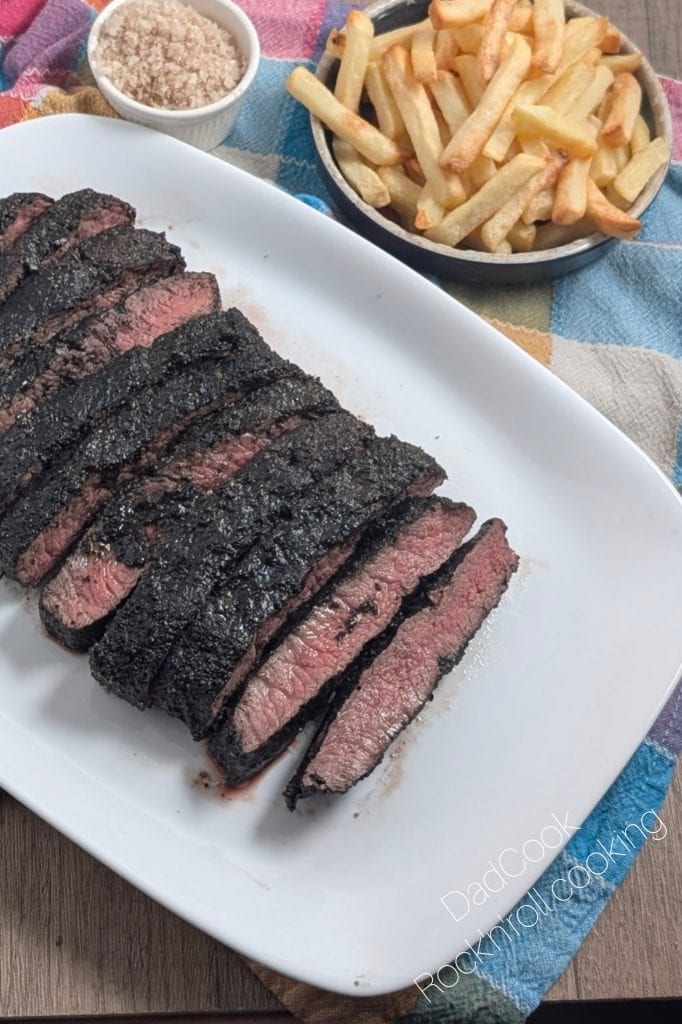
- Difficulty: Very Easy
- Cost: Very Cheap
- Rest time: 10 Minutes
- Preparation time: 10 Minutes
- Portions: 2
- Cooking methods: Stovetop, Oven
- Cuisine: Italian
- Seasonality: All Seasons, Spring, Summer
Ingredients
- 2.2 lbs Flat Iron Steak (Bavarian Simmental)
- to taste Rub (Black mamba)
- extra virgin olive oil
Tools
- 1 Oven Hisense
- 1 Iron Pan DE BUYER
- 1 Knife Sanelli Ambrogio
Steps
Preparation: Remove the meat from the refrigerator at least 30-60 minutes before cooking.
Pat it dry with paper towels. Seasoning: Brush each side of the meat with a drizzle of extra virgin olive oil.
Generously apply your favorite Rub all over the surface, gently massaging it to help it adhere well (“full coverage of rub”).
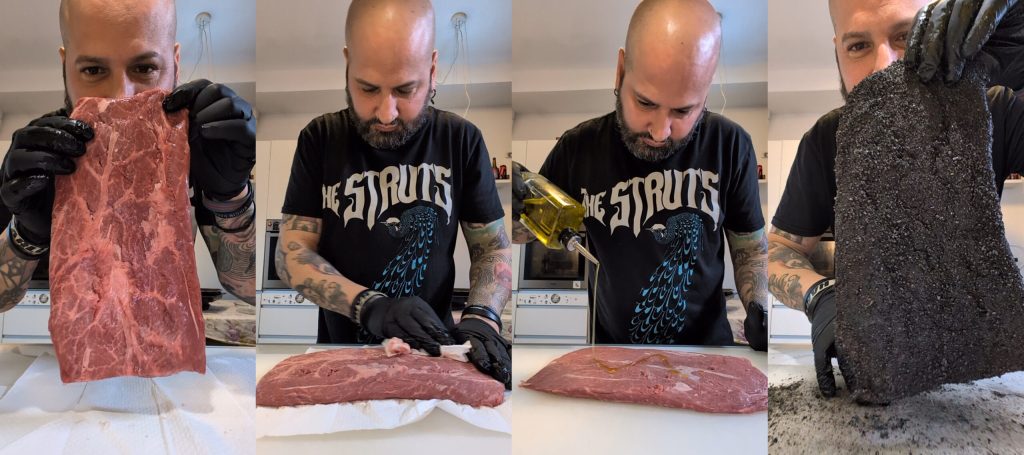
Preheat Oven: Preheat the oven to 212°F (static or light fan mode).
Place the meat on a rack set over a baking sheet (to catch any drips) or directly on a baking sheet lined with parchment paper.
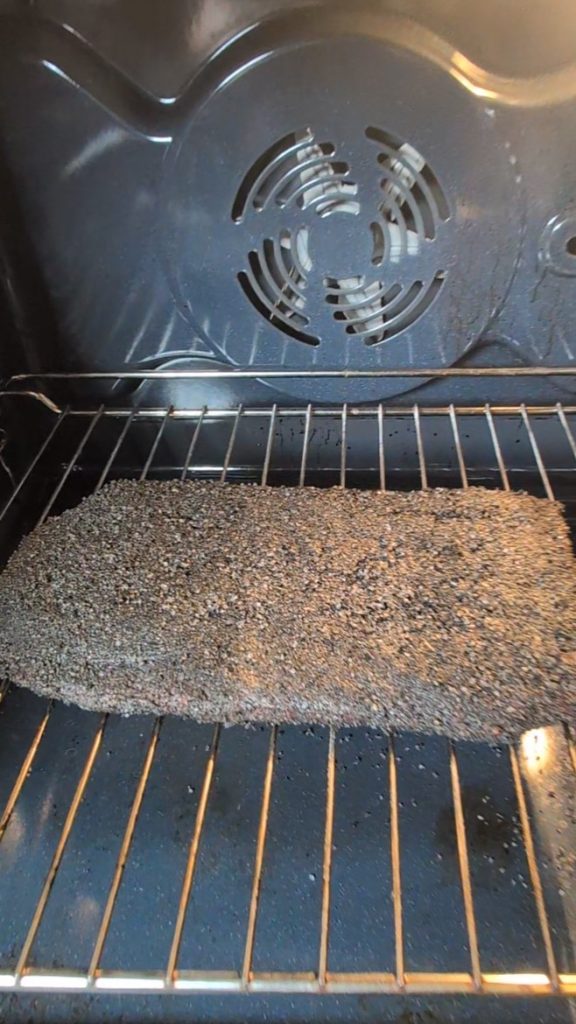
Slow Cooking (Oven): Insert the meat thermometer probe into the thickest part of the steak. Bake and cook slowly until the internal temperature reaches 110-112°F.
The indicative time is about 25 minutes, but only trust the internal temperature recorded by the thermometer.
It may take more or less time depending on the thickness and initial temperature of the meat.
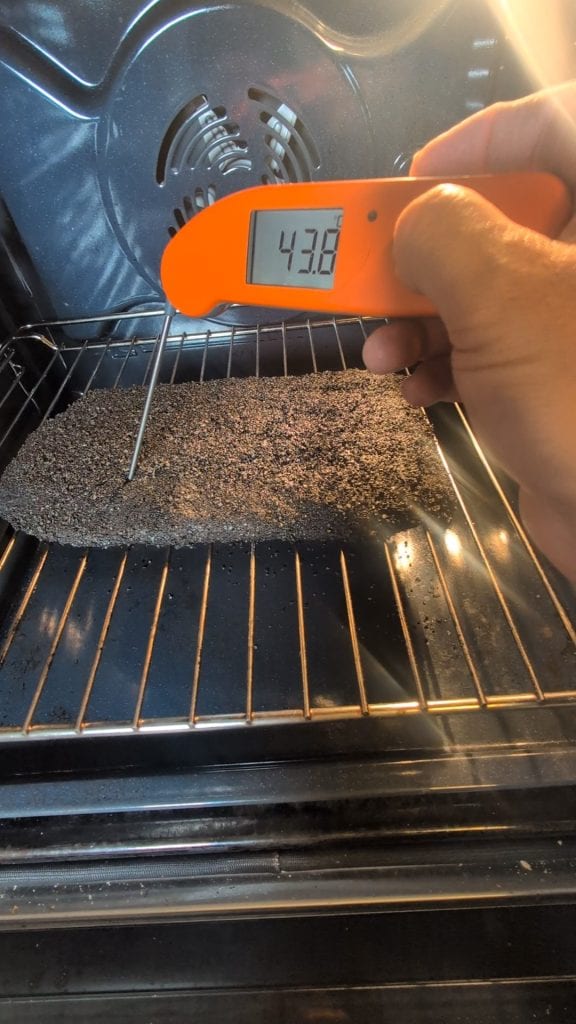
Searing Preparation: While the meat is in the final stages of cooking in the oven (or immediately after removing it upon reaching the 110-112°F internal temperature), ensure your heavy skillet is already hot.
Heat it over very high heat with a drizzle of EVO oil until it is very hot, almost smoking.
Remove the meat from the oven and prepare for searing.

Quick Searing: Pat the surface of the meat again with kitchen paper to remove surface moisture (this promotes the Maillard reaction and a better crust).
Gently lay the meat in the hot pan.
Sear for exactly 1 minute per side, without moving it, to create a nice crust.
Final Searing (Optional – for Blue/Extra Crust): If you desire a very rare result (Blue) or want to intensify the crust, you can sear for an additional 30 seconds per side.
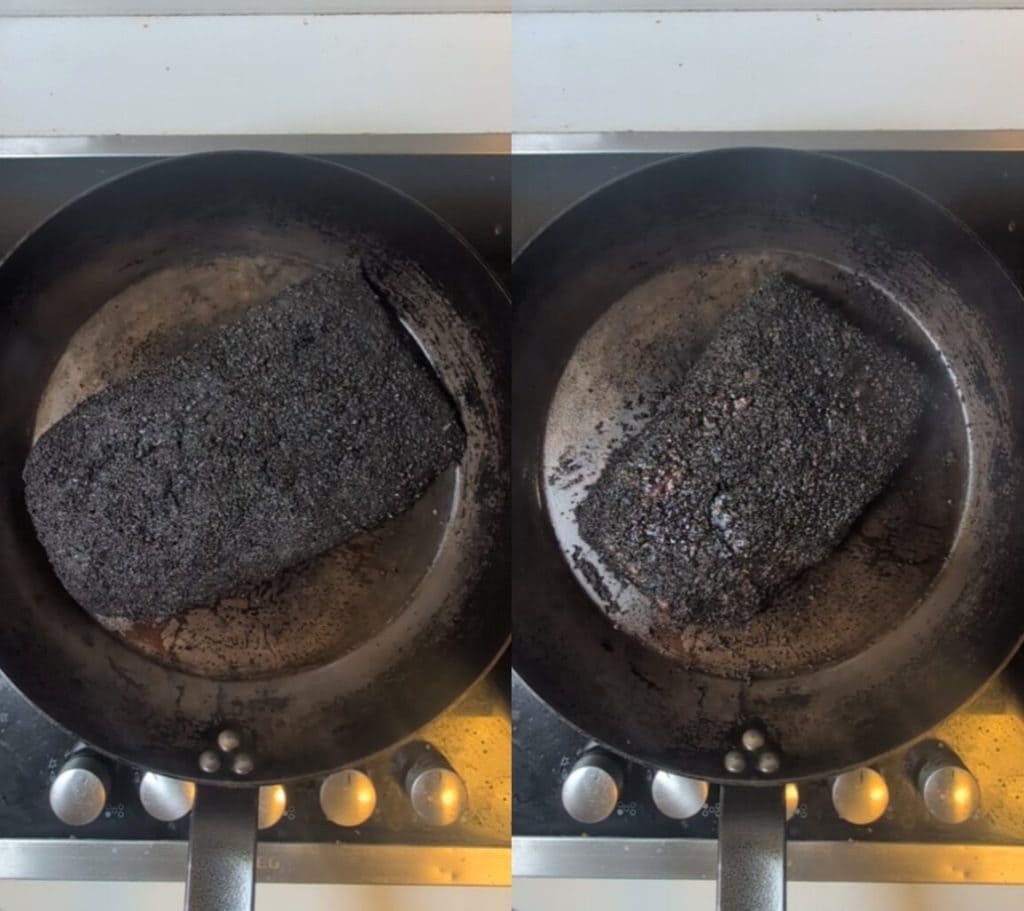
Essential Rest: Immediately transfer the meat to a clean cutting board.
Cover it now with a sheet of aluminum foil and let it rest for 10 minutes.
This step is crucial to allow the juices to redistribute evenly within the muscle fibers, ensuring maximum tenderness and juiciness.
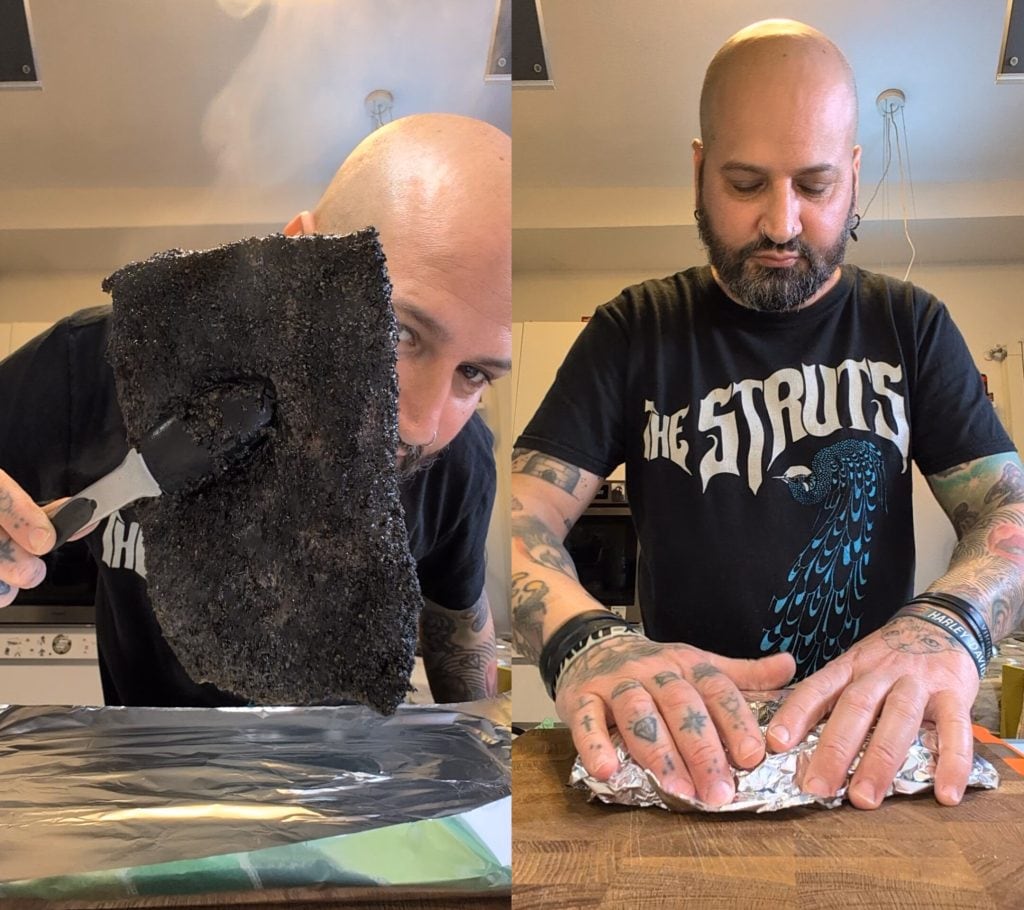
Slicing and Tasting: Remove the aluminum foil. Now you’re ready to slice.
Slice the meat strictly against the grain (perpendicularly to the direction of the muscle fibers) into slices about 0.4 inches thick.
Serve immediately and enjoy the result of your ideal cooking!
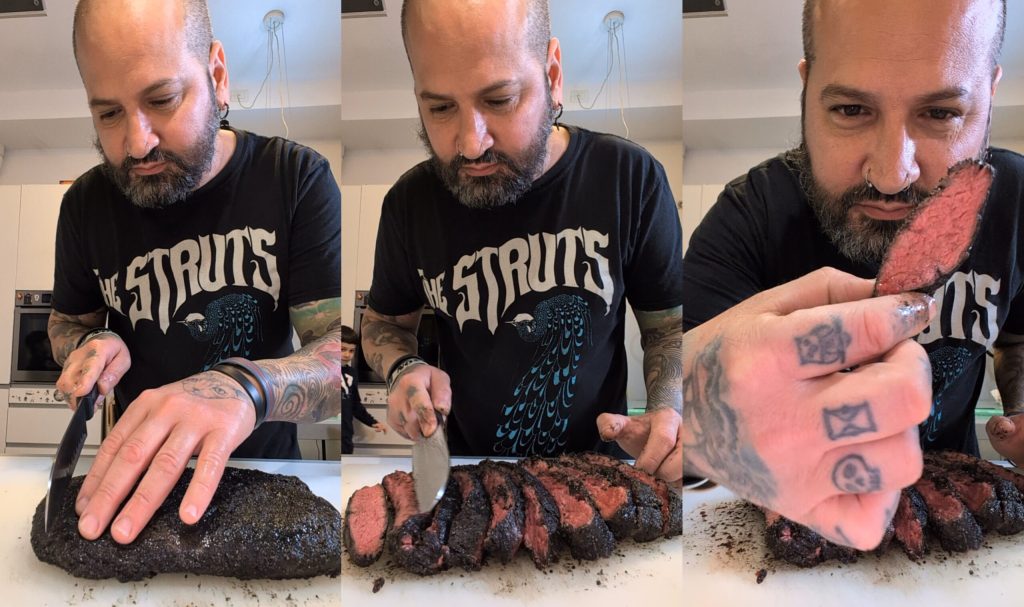
Tips, Storage, Variations, and Notes
Key Tips (Summary):
Temperature vs Time: In reverse sear, the meat thermometer is your best friend. Trust the internal temperature (110-112°F before searing for this method), not the oven timer.
Perfect Drying: A well-dried surface of the meat (patted with kitchen paper) before oven cooking and especially before pan-searing is crucial for achieving a crispy crust (Maillard reaction).
Hot Pan: The searing phase must be quick and at very high temperature to create the crust without overcooking the already perfectly cooked interior in the oven.
Essential Rest: Don’t rush! Resting for 15 minutes after cooking is crucial, especially for a 2.2 lbs piece, to allow the fibers to relax and the juices to redistribute. This ensures maximum tenderness and juiciness.
Cut Against the Grain: Always observe the direction of the muscle fibers and slice the meat perpendicular to them. This is essential for the perceived tenderness of cuts like the Flat Iron / Cappello del Prete.
Storage:
If leftover, cooked Flat Iron Steak can be stored in the refrigerator, tightly sealed in an airtight container, for 2-3 days. You can consume it cold, thinly sliced for salads or sandwiches, or gently reheat it (in a low-temperature oven or briefly in a pan) taking care not to cook it further.
Variations:
Rub: Experiment with different types of Rub. Try a coffee rub for more roasted notes or a spicy one with chili for a kick.
Flavors in Searing: During the pan-searing phase, you can add a clove of garlic in its skin and sprigs of herbs (rosemary, thyme) along with a knob of butter in the last 30-60 seconds, basting the meat with the melted butter.
Accompanying Sauces: Serve the meat with sauces like chimichurri, béarnaise sauce, porcini mushroom sauce, or a simple red wine reduction by deglazing the cooking pan.
Notes:
The Cut: Ensure your “Cappello del Prete” has been processed to remove the tough central connective strip if you intend to cook it like a Flat Iron steak. Otherwise, it is more suitable for long, moist cooking methods.
Size: 1 kg is a considerable piece. The oven cooking times can vary greatly based on the actual thickness and initial temperature of the meat. Always use the thermometer as your main guide.
Ambient Temperature: Bringing the meat to room temperature before starting cooking helps achieve a more even result.
Enjoy your meal!

FAQ
Frequently Asked Questions (FAQ)
What is the exact difference between Cappello del Prete and Flat Iron Steak?
The “Cappello del Prete” is the name of the whole muscle cut (shoulder cover), which contains a central connective strip. The “Flat Iron Steak” is obtained by professionally removing that strip, resulting in two more tender steaks ready for quick cooking. If you buy “Cappello del Prete” for this recipe, ensure it has already been cleaned and prepared as a Flat Iron.
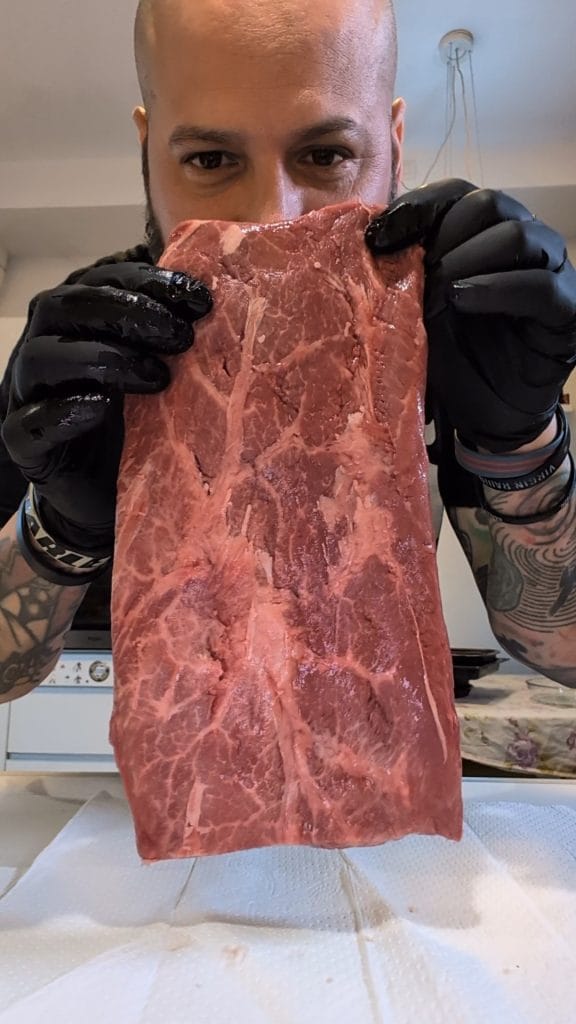
Why does my Flat Iron / Cappello del Prete sometimes come out tough?
The most common causes are:
1. Overcooking: Exceeding medium doneness makes this cut chewy.
2. Lack of resting: Not resting the meat after cooking causes juice loss.
3. Incorrect slicing: Cutting along the grain instead of against it makes chewing difficult.
4. Strip not removed: If cooking an unprocessed Cappello del Prete as a Flat Iron, the central strip will remain very tough with this quick cooking.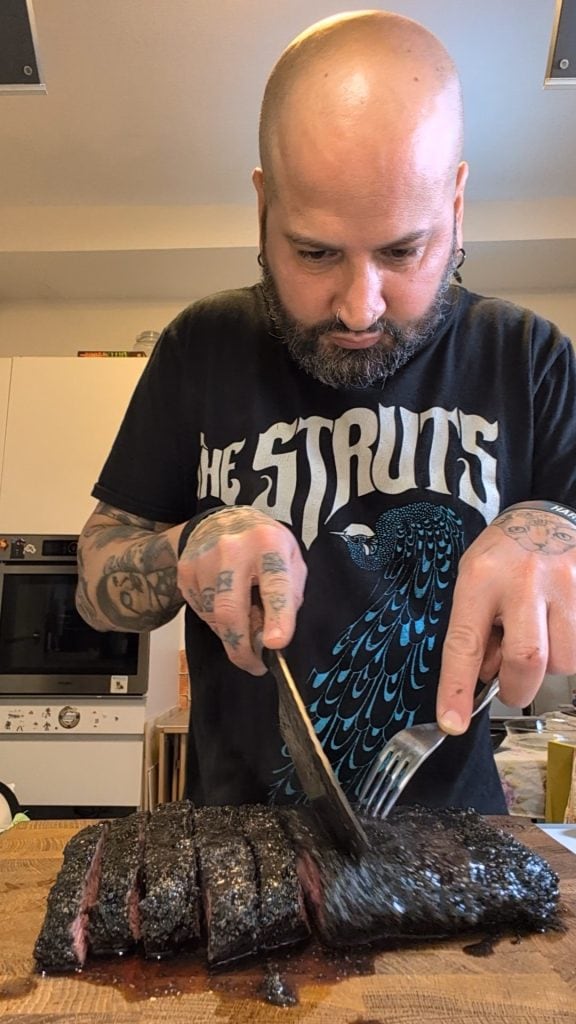
Can I make this recipe without a meat thermometer?
It is strongly discouraged, especially with the reverse sear method. The entire technique relies on reaching a precise internal temperature (110-112°F in this case) before the final sear. Without a thermometer, it is very difficult to judge the internal temperature accurately, risking overcooking or undercooking the meat in the oven. A probe thermometer is a small but essential investment for consistent results.

What are the advantages of the Reverse Sear method used in this recipe?
The reverse sear offers several advantages:
1. Uniform cooking: The low oven temperature gently cooks the meat from edge to edge, avoiding the classic gray band of overcooked meat under the crust.
2. Better control: It is easier to reach the desired internal temperature precisely.
3. Perfect crust: The meat’s surface dries slightly in the oven, allowing for a quicker and more effective Maillard reaction (crust) during the final sear in a hot pan.
Is it really that important to slice the meat against the grain?
Yes, absolutely. The Flat Iron Steak has long and visible muscle fibers. Slicing “against the grain” means cutting perpendicular to these lines; this shortens the muscle fibers in the individual pieces, making them much more tender and easier to chew. Cutting along the grain would leave long and tough fibers, giving a tough sensation even if the meat is perfectly cooked.
What are the final internal temperatures for different levels of doneness?
Indicatively, the final temperatures (after resting) are:
Blue / Very Rare: 118-122°F
Rare: 126-131°F
Medium-rare: 135-140°F (often ideal for this cut)
Medium: 140-145°F
Medium-well/Well-done: >150°F (generally not recommended to maintain tenderness).
Remember that the internal temperature can rise another 1-2 degrees during resting.

